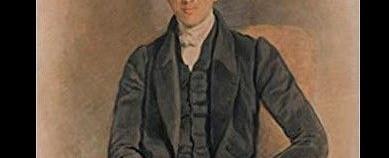A Pilgrimage with Newman: Reading Patricia O'Leary's The Gentleman Saint

Patricia O’Leary’s The Gentleman Saint (Gracewing, 2020) is a short and, by and large, delightful introduction to John Henry Newman. Its narrative framework is suggested by the title and subtitle, focusing on the gentleman, with its connections for Newman to higher education, and pilgrimage.
I will return to the audience for this volume in the conclusion, but let us take, to start, a reader new to this great saint for our time, as O’Leary and others have described Newman. She (the new reader) will have toured the great outlines of his biography, including his childhood, life at Oxford, conversion to the Catholic Church, experience in Ireland founding a Catholic university, and his four trips to Rome; she will have read many of his most famous and affecting or inspiriting quotes, including the poem Lead Kindly Light, “The Short Road to Perfection,” “God has created me to do him some definite service,” and the final words of the angel to Gerontius in purgatory; she will have been acquainted with the broad outlines of The Idea of a University, “The Second Spring,” and the Apologia. In short, while anyone might wish here or there for the inclusion of a favorite quote or work, the new reader will have a broad and representative encounter with Newman, often in his own words, as O’Leary, citing Newman himself, aims to do as much as possible.
The most effective and engaging chapter is also the longest and occurs relatively early in the book: “The Annual Newman Pilgrimage to Littlemore.” Here O’Leary describes twelve stations that are in fact travelled annually by pilgrims. O’Leary herself walked these stations, a point to which I will turn next. The brilliance of the chapter is that it develops most fully the promise of the subtitle and leads the reader on a literary pilgrimage that parallels the real-world one. It fills out important biographical details, including the death of his father, sister Mary, and mother, and it culminates in his final Anglican sermon, “The Parting of Friends,” and Newman’s conversion to the Catholic Church. Everything about this chapter works, and it is unfortunate that the author did not see fit, or find a way, to do something similar with the sections on Newman’s travels to Dublin and Rome.
O’Leary weaves her own pilgrimage into the narrative, though she does so only at intervals and with a light touch, so that it enhances the reader’s journey without detracting or distracting from the primary focus on Newman. Indeed, for a reader already familiar with Newman, it is one of the most enjoyable parts, as it brings one alongside the events leading to and up to the canonization. It is also in this way that she brings in speeches by Pope Benedict XVI and others on the occasions of Newman’s 2010 beatification and 2019 canonization, tying Newman into the present.
There are two major problems with the work, which must be addressed in turn. The first is O’Leary’s loose approach to citing and interpreting Newman. There are numerous references to what Newman would have thought or felt. These are less out of place in a popular book than they would be in a scholarly work, but the danger is the same in kind if not in degree. There are, as well, assertions of the type, “This patron of writers and journalists [Francis de Sales] was his favorite saint” (105). Was he? I have not heard it before and can neither think of a likely source nor find one after searching. Quotations of Newman are also at times given seemingly apropos of nothing. For example, a paragraph about Newman and Pope Benedict are compared as experiencing state pressure against religion and a quote is added without comment about Newman despairing of Catholic unity in his time.
More difficult and troubling are the citations and endnotes throughout the book. There are dozens of instances of citations that are simply absent, though similar sources are cited elsewhere, so that there is neither rhyme nor reason for knowing whether to expect a citation at all. Of over 200 citations in total, I verified problems with at least 39 of them, not including failures to cite page numbers, which plagues almost every reference to The Idea of a University and the Apologia. Indeed, references to the Apologia appear almost to be a placeholder for quotations not yet located, since the correct reference varies from Anne Mozley’s Letters and Correspondence of Newman to 1845 to Autobiographical Writings to Newman’s Biglietto speech (My Campaign in Ireland, cited elsewhere by O’Leary, would be a usual source) to a quote from Benedict XVI. The Idea of the University is cited for Rise and Progress of the Universities once. A letter to Miss Holmes is given as a letter to George Ryder. It would weary the reader to describe all of the problems with the footnotes, so I pass over many other problems.
A few other items may be noted. O’Leary seems to have decided not to bring in controversial material, so Newman’s difficulties with the London Oratory, with Rome, and with the hierarchy in England are dealt with fleetingly, in a way that risks misrepresentation by omission, though her precise words are all more or less defensible. Almost a full third of the book is connected to the Catholic University of Ireland, which became University College Dublin, and this focus is both questionable in terms of its importance to Newman’s life as a whole and is inadequate in its details. This seems rooted in O’Leary’s own history and interests rather than in Newman. This would be more justifiable if she had been more explicit in her intention, which I only infer, to craft a narrative that combines her pilgrimage with an introduction to and delight in exploration and discovery of Newman.
There are other issues with O’Leary’s handling of Newman on higher education. The precise significance of a “gentleman” for Newman has been misunderstood or mischaracterized by scholars before, and it is not clear that O’Leary avoids this. She certainly does not explore the interesting tension between Newman’s praise of the gentleman and its fundamental inadequacy, which Newman recognized, when we speak of the saints. Yet, here we find ourselves, Newman was a gentleman and is now a saint! The concept was stronger than the execution. O’Leary also conflates the intellectual importance of including theology in a university curriculum with the rather distinct importance of moral and spiritual formation as necessary to the integrity of university education.
To O’Leary’s credit, none of the problems in the book compromise an essentially faithful representation of Newman. I return, then, to the best audience for this book. Two of its strongest points is that it is an easy read and full of Newman’s own words on many subjects. Indeed, many or most of its chapters are two to four pages, so it can be read in spare moments. A reader new to Newman is likely to profit. Those well-read in Newman are likely to enjoy revisiting such an array of quotes and ideas largely familiar, and may most appreciate, as I have, the pilgrimage framework, which works in a literary form and brings one in to the experience of the beatification and canonization. Perhaps the best audience will be those who intend a pilgrimage with Saint John Henry Newman as a focus, especially if it is to Oxford, where the chapter on the “Annual Pilgrimage” may be a guide.
Gerriet Suiter
Program Manager, Department of Catholic Studies, Duquesne University
Gerriet Suiter is program manager for the Department of Catholic Studies at Duquesne University and a scholar at the National Institute of Newman Studies.
QUICK LINKS

